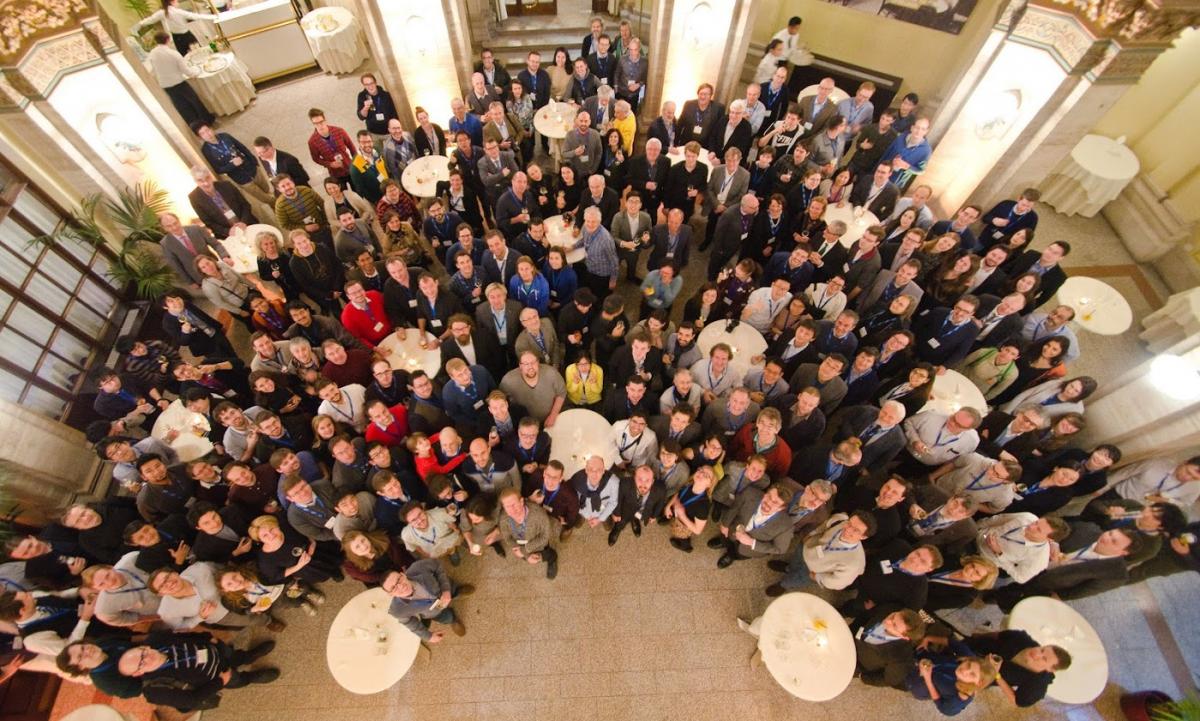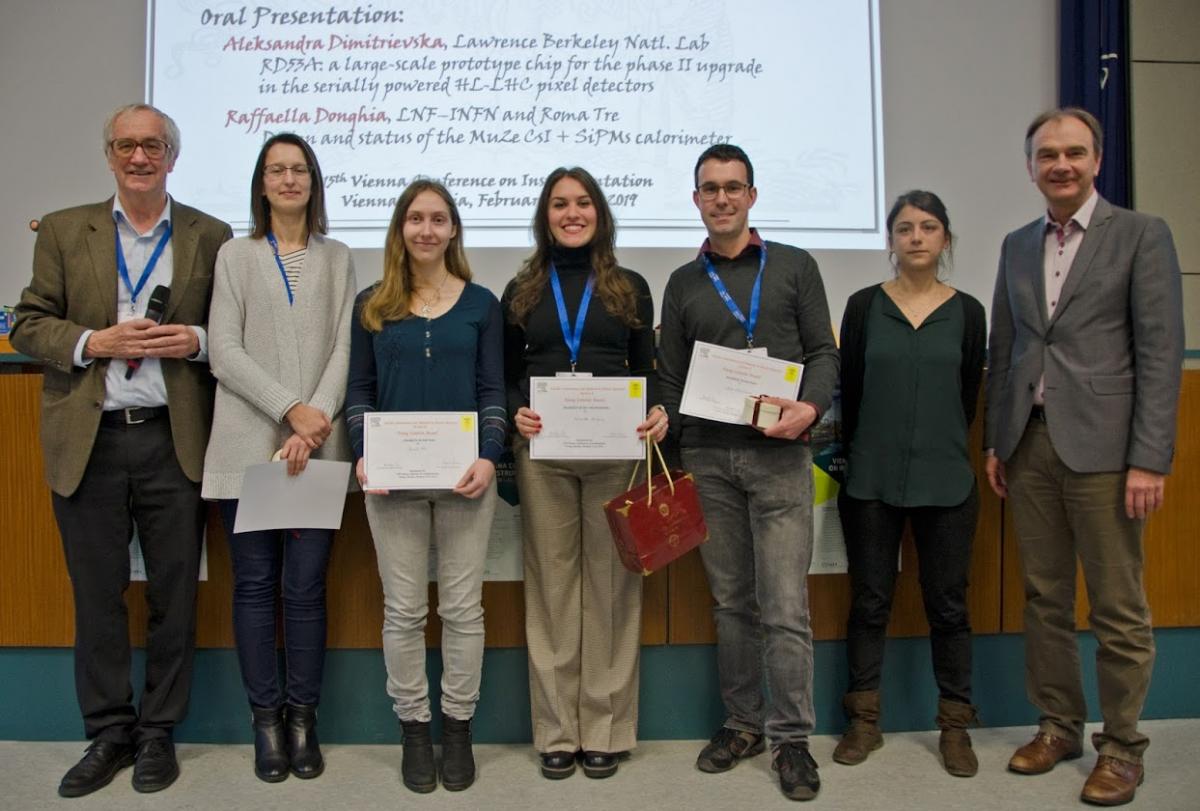15th Vienna Conference on Instrumentation
Studying the most microscopic elements of nature rely on the parallel progress of detector concepts and associated technologies. Experimental observations and open theoretical questions point to new paths for exploration in all fronts including fixed-target, collider and astrophysical experiments that put new requirements for future detectors. The 15th Vienna Conference on Instrumentation offer the opportunity to about 300 experts from all over the world to meet and discuss ongoing R&D efforts and set future roadmaps for collaboration.

The chairperson of the 15th Vienna Conference on Instrumentation (VCI2019) and head of CERN’s EP Department, Manfred Krammer, opened the conference. He reminded the audience of the first conference of this series held in 1978 under the name Vienna Wire Chamber Conference: “Enormous progress was made in these 40 years. In 1978 we discussed wire chambers as the first electronic detectors and now we have a large number of very different detector types with performances unimaginable at that time”
Following this strong tradition, the Vienna conference covered fundamental and technological issues associated with the developments and exploitation of the most advanced detector technologies as well as the value of knowledge transfer to other domains. Over five days, participants covered different topics including sensor types, fast and efficient electronics, cooling technologies and the appropriate mechanical structures. These are the key elements informing the design of detectors that could help us explore the energy and intensity frontiers and meet the requirements of planned and proposed facilities. Christian Joram (CERN) mentions: “Progress in experimental physics often relies on advanced and breakthroughs in instrumentation that lead to substantial gains in measurement accuracy, efficiency and speed or even open completely new approaches. The Higgs discovery and the first observation of Gravitational Waves offer two fantastic examples”.
The first day started with an overview of LIGO searches for gravitational waves covering the most recent results and presenting plans for future ground-based gravitational wave detectors calling for serious planning effort to ensure that they can be operational in the 2030s. A second plenary talk focused on the value of knowledge transfer that can maximize the impact of detector technologies and expertise in society and in particular through industry.
A number of talks presented the ongoing developments in the LHC experiments including ALICE and LHC upgrade programmes for Run3 and for the High-Luminosity LHC as well as CMS’s Mip Timing Detector and ongoing R&D activities for the CLIC pixel detector. The day finished with three talks covering different aspects of Silicon Photon-Multiplier detectors. The first talk reviewed the performance of this technology and what recent developments promise for the future, the second focused on experimental advances in the time resolution of photon detection - largely motivated by high-luminosity colliders - and the final talk discussed the design of a timing counter for MEG II presenting the first successful results from a pilot run.
During the parallel sessions of the conference, a number of talks covered in depth the detector upgrade programme of the LHC experiments, including possibilities for fixed target experiments and more specialized detectors for dark matter searches, neutrino and astroparticle experiments. The diversity of the conference is reflected in the large number of contributions from proposed experiments in laboratories around the world including Belle II, Darwin, SuperNEMO, LHAASO, EUSO-SPB2, GAPS and AXEL covering a wide range of different experiments in the search for new physics.

Group photo with this year's recipients of the Young Researcher Award of the Vienna Conference on Instrumentation
The challenges lying ahead for the detector community call for up-to-date expertise. To meet them we have to attract the best talent that will form the next generation of detector experts. The organizers of VCI2019 acknowledge the importance of involving early-stage researchers in this effort and honour their work/contributions established a Young Researcher Award presented in the last day of the conference. This year’s award for poster presentation was shared between Micro Christmann who worked on the optimization studies for a Beam Dump Experiment (BDX) at MESA (Johannes Gutenberg University Mainz) and Jennifer Ott who presenter her work on pixel detectors on p-type MCz silicon using atomic layer deposition (ALD) grown aluminium oxide (Helsinki Institute of Physics). Aleksandra Dimitrievska (LBNL) working in the development of a large-scale prototype chip for the Phase 2 upgrade of the LHC experiments and Raffaella Donghia (LNL-INFN, Roma Tre) who contributed in the design of the MuZe CSI and SiPMS calorimeter shared the second award for the best oral presentation.
The meeting closed with a summary talk by Christian Joram, who highlighted the advances presented in the conference and emphasizing the links with CERN’s EP Departments planned R&D activities. Beyond innovative ideas and cross-disciplinary collaboration, development of new detector technologies call for good planning of resources and timescales and continuity. Thanks to the White Paper R&D programme that was initiated in 2006, a number of technologies and needed infrastructures were developed which led to the success of the LHC phase I and phase II upgrades. As the R&D for the LHC phase-II upgrade is ending near the end of 2020 it is timely to start preparing the future for LS3. Moreover, the CLIC and FCC studies already offer some clear ideas of the future experimental challenges and the update of the European Strategy for Particle Physics will offer more clear directions. With these targets in mind, EP’s proposed R&D programme covers a wide range of topics documented in the recently published report.
The high quality of the presentations and the large number of participants in VCI19 testifies to the success of the conference. It provided students and experts from across the world an opportunity to share knowledge and forge new partnerships and networks. “In the long history of the field we have seen the importance of cross-fertilization as developments for one specific experiment can catalyse progress in many fronts,” says Manfred Krammer. VCI2019 gave the opportunity to display the cutting-edge work in detector technologies that can allow us to continue in the path of discovery and inspired the next generation of scientists to join this exciting field.
